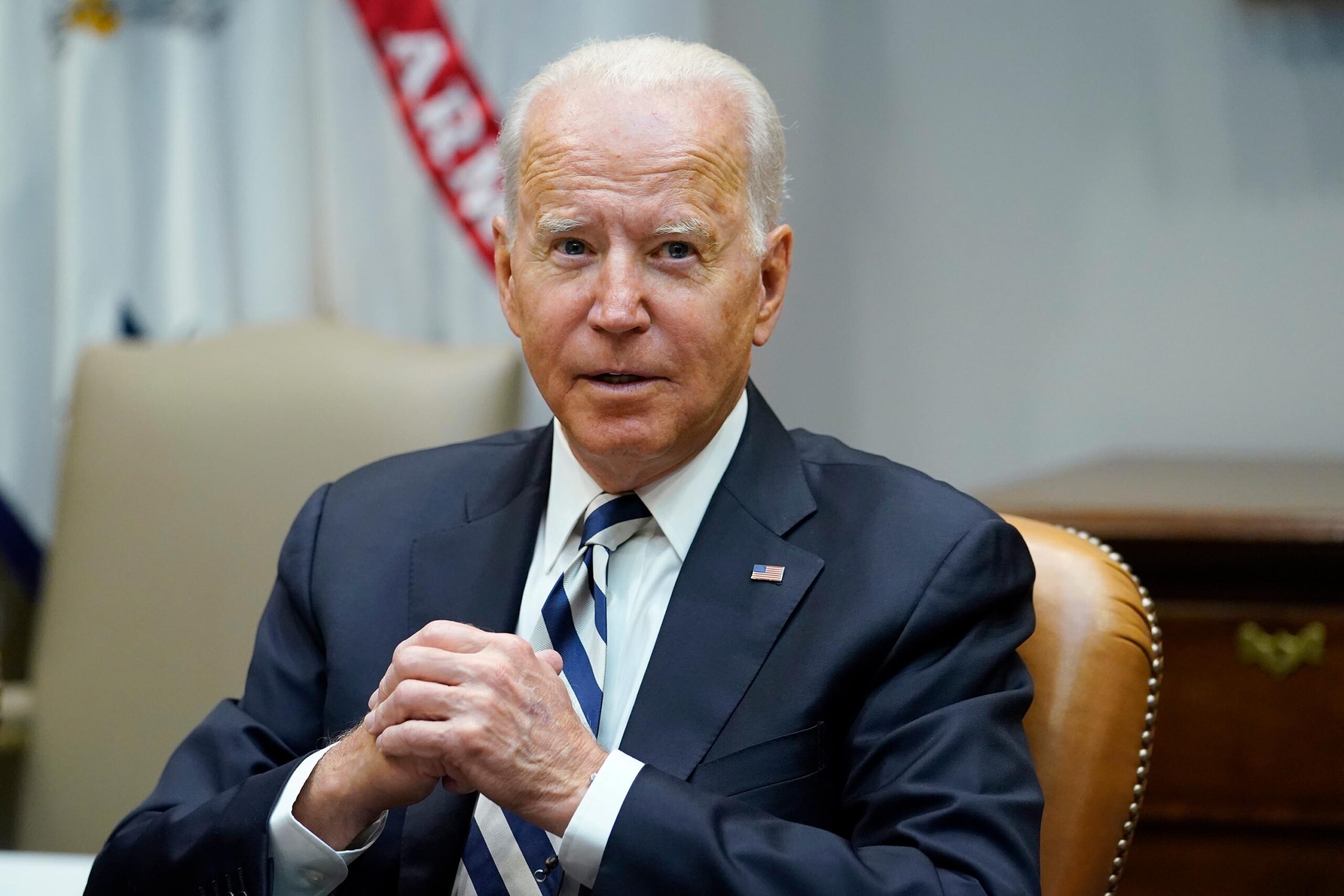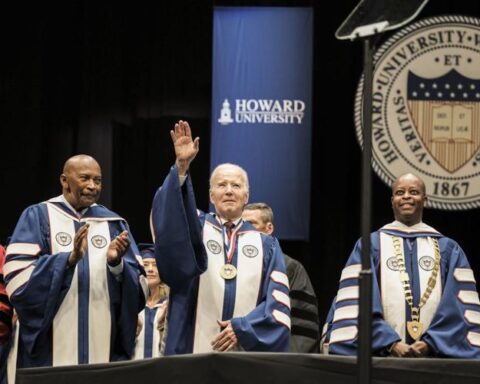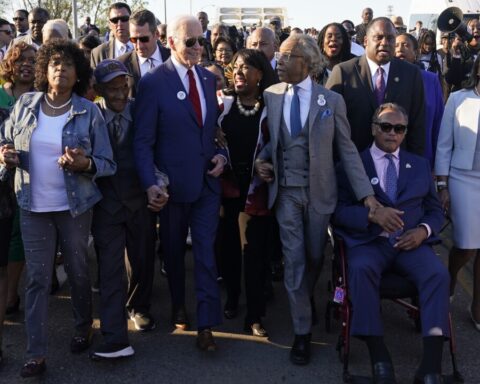The White House, fresh off securing a $1.2 trillion bipartisan infrastructure deal, plans to move in the coming days to highlight one of the thorniest pieces of that negotiation, according to a White House official: the $39 billion in new transit funding.
It’s part of a push to break out and emphasize specific pieces of President Joe Biden’s cornerstone bipartisan agreement — pieces White House officials see in polling as largely popular across the country.
But it also signals the most direct effort to counter questions and criticism from corners of their own party about an area of the agreement that is viewed as coming up short of their ambitions — and the goals laid out by Biden himself.
The spending in the agreement represents the biggest investment in public transit in US history, the official said, and comes at an urgent moment as aging and unreliable equipment — facing more than $100 billion in repair backlogs, by some estimates — has undercut transit agencies across the country.
Given transit’s role in communities, it’s also viewed by White House officials as a central pillar of Biden’s push on issues like equity, climate and economic justice.
The agreement would include the one-time surge in transit funding, paired with a five-year reauthorization for public transit programs equal to roughly $20 billion over the level set in last reauthorization.
“This bipartisan deal is the most important investment in public transit in American history,” Biden said in a statement the day the final agreement was clinched.
The White House push to highlight what they view as clear wins, particularly given their negotiating partners, comes at a critical time for measure as Biden and his team move to shore up Democratic support for the first piece of his sweeping $4 trillion economic agenda.
The Senate is currently considering the legislation, and aides in both parties say it remains on track to pass in the coming days.
But the dynamics are less set in the House, where Democrats hold a slim majority and progressives have raised a series of concerns about the scope and scale of the deal Biden signed off on with Senate negotiators.
The agreement represents billions fewer than Biden first proposed in his American Jobs Plan and falls short of a House-passed measure in the scale of both funding and progressive policy prescriptions, particularly related to climate. Even the final agreement emerged with $10 billion fewer in one-time transit funding than was previously listed in the deal’s framework, which was clinched in June — something that caught some transit advocates off-guard.
For White House officials, it marks the reality of the trade-offs necessary for Biden to secure his sought-after bipartisan agreement. It’s something Biden, publicly and privately, has made clear he viewed as critical to prove the federal government can actually get things done. But it’s also an agreement, officials note, that is critical to unlocking the pathway for the sweeping second part of his legislative agenda — a $3.5 trillion proposal packed with progressive priorities.
“Of course, neither side got everything they wanted in this deal. But that’s what it means to compromise and forge consensus — the heart of democracy,” Biden said last week.
White House officials have leaned into what they view as clear political benefits of the agreement, circulating polling to their Democratic allies underscoring just how supportive voters are of the overall proposal.
“What’s clear from these polls — along with other polls released in the past few weeks — is that President Biden continues to propose and deliver plans that the American people, across party lines, agree are good with the country, all while he continues to maintain near universal approval among voters of his own part,” Mike Donilon, one of Biden’s closest advisers, wrote in an August 2 memo obtained by CNN that included a series of new positive poll numbers tied to the agreement.
But the White House is now moving quickly to try and underscore what they view as key policy wins in the agreement, despite the initial detractors.
The billions in new money over the baseline in the agreement on the five-year reauthorization was a concession secured in the final days of the negotiation, serving as a key win for Democrats on an issue that had been one of the most difficult needles to thread in the talks, according to a Democrat familiar with the negotiations. It is designed to serve as a key mechanism to fund the administration’s priorities outside the deal itself in the years ahead.
Still, it’s clear there is work to be done to sell the deal to skeptical members inside the party, perhaps none more so than the most powerful House lawmaker on transportation issues: Rep. Peter DeFazio, the chairman of the House Transportation and Infrastructure Committee.
“I sought to bring us into the 21st century with transportation,” DeFazio, the Oregon Democrat who shepherded the House measure to passage, told CNN’s Kate Bolduan on Monday. “This looks like a status quo bill. We can’t perpetuate that.”
Still, there were moments in the final days of the negotiations where it appeared unclear whether transit would make it into the final agreement at all as the two sides sparred over the size of funding in the final agreement, according to multiple people familiar with the talks.
Democrats in the talks, however, made clear cutting the transit piece altogether was a non-starter, according to the Democrat familiar with the negotiations. They pressed for, and got, additional transit funds in the reauthorization piece of the final deal.
The White House official also countered that the deal would represent funds for repairs, upgrades, modernizations and expansions into high quality transit options into new communities has no precedent in recent history.
DeFazio has said he’d like to conference his proposal with the Senate version, something White House officials have signaled to Capitol Hill is a nonstarter given the tenuous nature of the coalition that came together to secure the Senate agreement.
It’s a reality likely to shift the focus onto the second piece of Biden’s agenda — the $3.5 trillion proposal already slated to direct billions toward federal expansions for progressive priorities in education, home and childcare and paid leave.
Biden and his team, for the moment, have been clear that the two pieces of the agenda are in the midst of a lengthy and, in many ways, traditional process of legislative negotiation. The infrastructure package, always viewed as the first element of the pathway to the agenda, is advancing in the Senate now.
A vote on the budget resolution necessary to unlock the second piece of the process is expected as soon as the infrastructure bill is passed.
It will mark a starting gun of sorts for that second piece and a process officials on both sides of Pennsylvania Avenue acknowledge will be punctuated by significant battles between the moderate and progressive sides of the Democratic Party.
“This is a process,” National Economic Director Brian Deese said on FOX News Sunday. “And the good news that we’ve seen over the course of the last week is that this process is moving forward and moving forward in a way a lot of people said they didn’t think was possible just a couple of weeks ago.”





